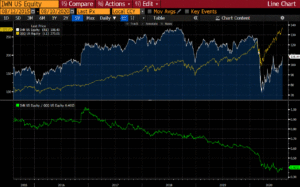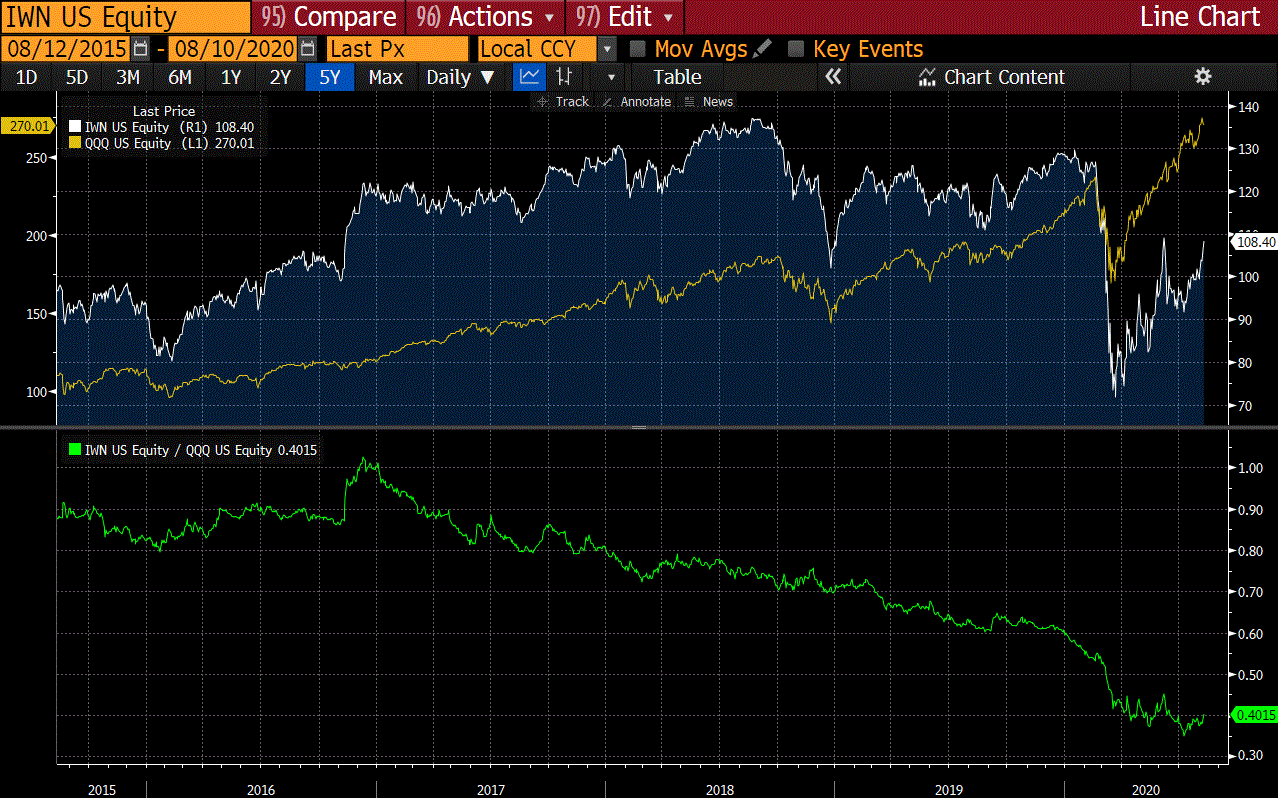
Once a quarter, I spend a Sunday reading through all the quarterly fund letters that have accumulated in my inbox. Of course, I’m selfishly seeking out stock ideas, but by reading over a hundred letters in a single sitting, I can better pick out trends in positioning and other nuances. Despite everyone claiming to be contrarian, the vast majority of fund managers know each other, share ideas, cross-own securities and overweight themes at similar times. As a true contrarian, I want to avoid the groupthink and hedge fund hotels that inevitably seem to wreck returns. I want to be in the niches where no one else seems to be playing. Reading dozens of letters at once is a good way to take the market’s temperature and ensure I’m not doing anything too foolish.
Q2 2020 hedge fund letters, conferences and more
Every Portfolio Manager Is Now A Compounder Bro
With that preamble out of the way, I cannot take it any longer. Look, I get it. Value is dead and every portfolio manager is now a “Compounder Bro,” but is there anyone left who isn’t exclusively invested in “world class businesses” with “deep moats” and “rockstar” CEOs who are all perfectly “aligned” with shareholders? I get that some businesses are better than others and someone has to run those superior businesses, making those CEO appear brilliant, but it’s unlikely these businesses or CEOs are quite as good as investors make them out to be. Could a soaring share-price be responsible for much of the supposed brilliance?
Excluding a few antiquarians, I hardly even saw anyone mention valuation metrics this quarter—maybe that’s because the “compounder” metrics are downright embarrassing. Instead, I mostly heard people extol the competitive positions of various businesses and the future growth potential. Then again, those who have cared about valuations have mostly seen their capital redeemed, so I cannot fault former value nerds who now pay 50 times revenue for unprofitable growth. In an industry where people get a bonus based on performance, there’s a powerful incentive to ignore facts and go with what’s working—value investing clearly isn’t working.
I won’t sit here and disagree that software is a great business; almost always superior to a capital-intensive industrial business and for that matter, a branded industrial business is still preferable to a capital-intensive commodity business with volatile pricing. I think we all intuitively understand this. However, I also believe that there is a price for everything in the markets and as more and more capital clusters into the “better businesses,” the rest of the market has collapsed to valuations that are insane.
In the twenty years I’ve been reading investor letters, I have never once seen someone boast that they’ve invested in a terrible business, with corrupt and incompetent management. Oddly, those tend to be the sorts of stocks that have the best upside as minor improvements can dramatically impact the future value. I’m not arguing that you should go look for D companies that could become Cs (though I do my fair share of that). Rather, I would argue strongly that the valuation gap between A and B companies has never been wider during my career. B’s are still genuinely good businesses—just maybe not software good.
Growth vs Value
I don’t know when, I don’t know why (though a pick-up in inflation may be enough to get this going), but there will be a massive re-allocation at some point soon and capital will flee from the “compounders” and into the more mundane businesses that I fixate on. Since everything in finance involves leverage, I would have to think this process is fast, sudden and violent. I know there’s a chart of “growth” (QQQ – USA) to “value” (IWN – USA) going around that shows the ratio at the widest it’s been in decades. Unfortunately, the same chart was around two years ago and the trend has only become more extreme. No one knows when it mean-reverts, however, when the smartest value guys I know write investor letters where they focus on business quality and ignore valuation, who else is left to buy? To me, “growth” stocks have never been as crowded. Many of my friends openly joke about their “fraud allocation,” as they throw in the towel on common sense and succumb to performance pressures. This is how tops are made.
I know this is a cliche at this point, but above you see IWN in white and QQQ in yellow. Below is the spread between the two. Will it mean-revert?
On a final note, over the past few weeks, a surprising number of the Ponzi stocks, the SAAS stocks, the FraudCos and growth names have put in various topping patterns. These patterns are everything from “blow-off top reversals” to “double tops” to “failing rallies.” On Friday, many of these names broke lower and the leakage has accelerated Monday morning. I don’t know if this is the start of a trend, or a minor shake-out on the way to new highs. I also have noticed a surprising number of days in the past few weeks where the spread between IWN and QQQ was over 300bps. Clearly, something is happening under the surface here. When you take FAANGM out of the mix, the divergence is even wider. I think the market is giving a subtle message here that ought to be listened to.
I’m the last man standing with a value book and everyone else is overweight growth. Maybe I’m suffering from a case of wishful thinking as I analyze the tape, but as inflation begins to rear its head, I think we may be in for some real fireworks. If you’re long crap, be careful.
If you enjoyed this post, subscribe for more at http://adventuresincapitalism.com
The post A Warning To The Compounder Bros… appeared first on ValueWalk.

